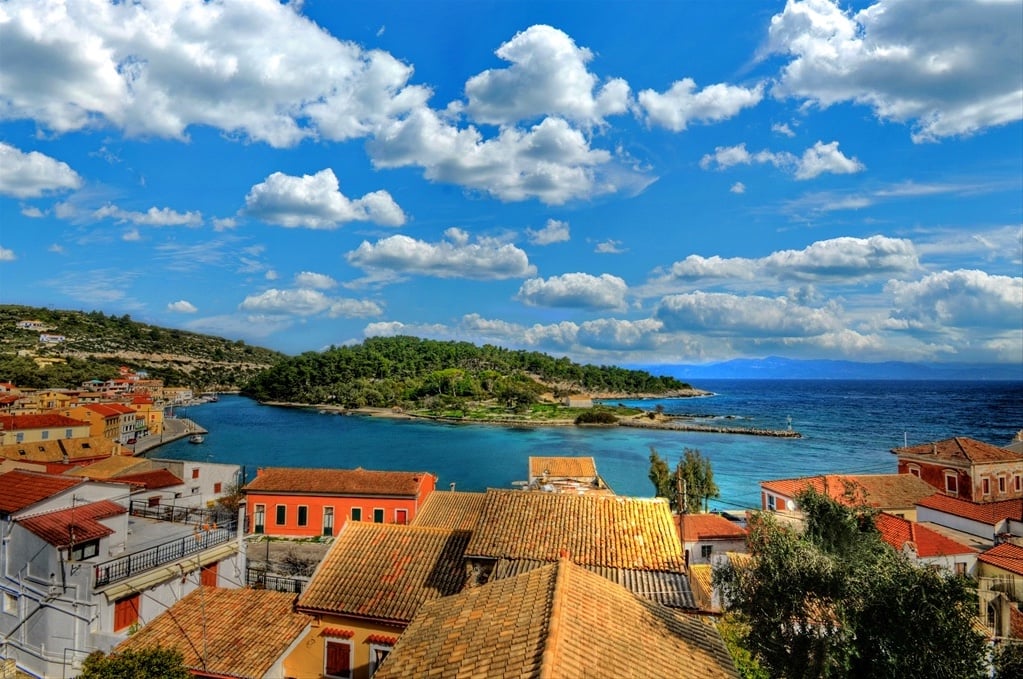Paxos, a Greek island in the Ionian Sea was the setting of “Maestro in Blue”, the first Greek series on Netflix that screened worldwide in March 2023. Its second season started screening in May 2024.
It is no surprise that the series creator Christoforos Papakaliatis chose the island which boasts serene getaways, summer fun, links to ancient history, and cozy harbors perfect for exploring by boat.
Also called Paxoi, it also offers another side of Greek culture, hosting festivals that showcase the fine arts every year in one of the most spectacular natural landscapes one can find anywhere.
Paxos actually comprises a series of islands that dot the Ionian Sea just south of the more well-known island of Kerkyra, or Corfu.
Originally believed to have been sealed by the seafaring Phoenicians and famous since antiquity for its wines, the islands were fought over in ancient times during the First Illyrian War in 229 BC, as recorded by the historian Polybius in “The Histories.”
Just a short trip over the sea from Italy, the area once was ruled by the Roman Empire, going back under Venetian rule in medieval times.
Changing hands many times over history, at one time under the jurisdiction of a French and Russo-Turkish alliance during the Napoleonic Wars, the island’s political stability was upended once again when it surrendered to the English on the Royal Navy frigate the HMS Apollo.
Becoming part of the British-established Ionian Union, Paxos saw some measure of peace for several decades. However, islanders chafed under British rule and Paxos eventually served as the home base of the Ionian independence movement, which led up to the islands’ successful joining of the new nation of Greece in 1864.
Home to only 2,500 people, the island swells with travelers every summer but becomes a quiet Brigadoon once again when Autumn descends.
That must have been the case even in ancient history as well, when, according to Greek mythology, the god Poseidon made the island by striking the island of Corfu with his trident, breaking a piece off in order that he and his wife Amphitrite could enjoy some quiet all by themselves.
The island offers so much to all travelers, including those who appreciate classical music in a spectacular natural setting, even serving as host to an annual classical music festival called the Paxos Festival, under the auspices of The Guildhall.
Due to its place in history and its many cultural attractions, Paxos is part of a European network called the “Cultural Villages of Europe.”
Sensitive to the needs of the many stray animals on the island, a perennial problem on many Greek islands, an animal welfare organization was formed on Paxos in 2005.
The Paxos Animal Welfare Society, or PAWS, works to improve the lives of the cats and dogs who also make the island their home.
In cooperation with the local municipality of Gaios, the charity has succeeded to a great degree in controlling the numbers of strays on Paxos, even setting up a permanent surgical office in Magazia, which was opened to some fanfare by the mayor in September of 2013.
Close to Italy, the islands of Paxos have a distinct flavor of that nation, and their residents speak a heavily Italian-inflected dialect.
The Italian ports of Bari and Brindisi are only a four-hour ferry trip away. The local architecture also reflects the colors of Italy, as seen in the many red-tiled roofs and glowing peach and orange-painted buildings.
These stunning islands are easy to reach from the Greek mainland by ferry boat from the port of Igoumenitsa, which takes one and one-half hours to reach Paxos, and the crossing itself is worth savoring.
The idyllic island of Corfu is also not far from Paxos, just a 2-hour ferry trip or a somewhat shorter hydrofoil voyage to the north.
Be sure to visit the Paxos area next time you would like a serene Greek island vacation with all the cultural amenities you could ask for.
Patricia Claus
Εστάλη στην ΟΔΥΣΣΕΙΑ, 20/6/2024 #ODUSSEIA #ODYSSEIA, Greek Reporter

